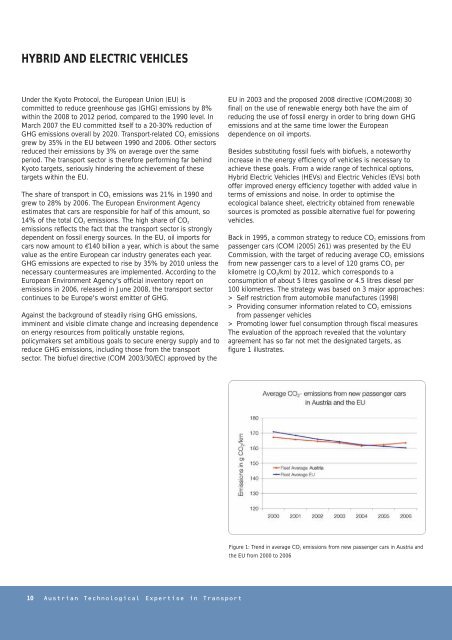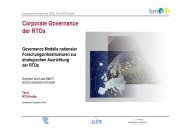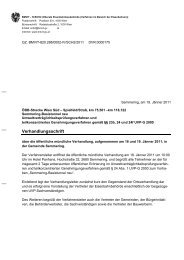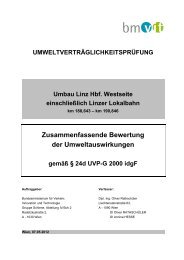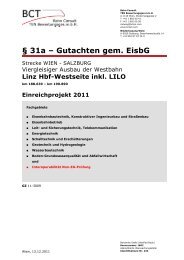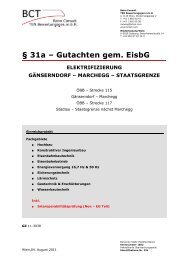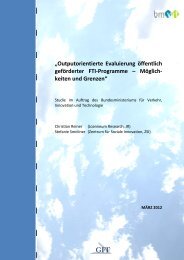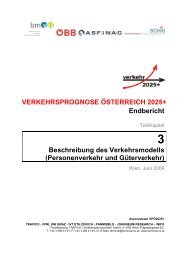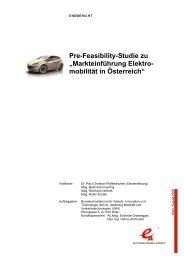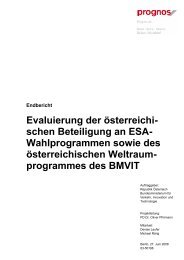Schriftenreihe .;technologiekompetenz Verkehr in
Schriftenreihe .;technologiekompetenz Verkehr in
Schriftenreihe .;technologiekompetenz Verkehr in
You also want an ePaper? Increase the reach of your titles
YUMPU automatically turns print PDFs into web optimized ePapers that Google loves.
HYBRID AND ELECTRIC VEHICLES<br />
Under the Kyoto Protocol, the European Union (EU) is<br />
committed to reduce greenhouse gas (GHG) emissions by 8%<br />
with<strong>in</strong> the 2008 to 2012 period, compared to the 1990 level. In<br />
March 2007 the EU committed itself to a 20-30% reduction of<br />
GHG emissions overall by 2020. Transport-related CO 2 emissions<br />
grew by 35% <strong>in</strong> the EU between 1990 and 2006. Other sectors<br />
reduced their emissions by 3% on average over the same<br />
period. The transport sector is therefore perform<strong>in</strong>g far beh<strong>in</strong>d<br />
Kyoto targets, seriously h<strong>in</strong>der<strong>in</strong>g the achievement of these<br />
targets with<strong>in</strong> the EU.<br />
The share of transport <strong>in</strong> CO 2 emissions was 21% <strong>in</strong> 1990 and<br />
grew to 28% by 2006. The European Environment Agency<br />
estimates that cars are responsible for half of this amount, so<br />
14% of the total CO 2 emissions. The high share of CO 2<br />
emissions reflects the fact that the transport sector is strongly<br />
dependent on fossil energy sources. In the EU, oil imports for<br />
cars now amount to €140 billion a year, which is about the same<br />
value as the entire European car <strong>in</strong>dustry generates each year.<br />
GHG emissions are expected to rise by 35% by 2010 unless the<br />
necessary countermeasures are implemented. Accord<strong>in</strong>g to the<br />
European Environment Agency's official <strong>in</strong>ventory report on<br />
emissions <strong>in</strong> 2006, released <strong>in</strong> June 2008, the transport sector<br />
cont<strong>in</strong>ues to be Europe's worst emitter of GHG.<br />
Aga<strong>in</strong>st the background of steadily ris<strong>in</strong>g GHG emissions,<br />
imm<strong>in</strong>ent and visible climate change and <strong>in</strong>creas<strong>in</strong>g dependence<br />
on energy resources from politically unstable regions,<br />
policymakers set ambitious goals to secure energy supply and to<br />
reduce GHG emissions, <strong>in</strong>clud<strong>in</strong>g those from the transport<br />
sector. The biofuel directive (COM 2003/30/EC) approved by the<br />
10 Austrian Technological Expertise <strong>in</strong> Transport<br />
EU <strong>in</strong> 2003 and the proposed 2008 directive (COM(2008) 30<br />
f<strong>in</strong>al) on the use of renewable energy both have the aim of<br />
reduc<strong>in</strong>g the use of fossil energy <strong>in</strong> order to br<strong>in</strong>g down GHG<br />
emissions and at the same time lower the European<br />
dependence on oil imports.<br />
Besides substitut<strong>in</strong>g fossil fuels with biofuels, a noteworthy<br />
<strong>in</strong>crease <strong>in</strong> the energy efficiency of vehicles is necessary to<br />
achieve these goals. From a wide range of technical options,<br />
Hybrid Electric Vehicles (HEVs) and Electric Vehicles (EVs) both<br />
offer improved energy efficiency together with added value <strong>in</strong><br />
terms of emissions and noise. In order to optimise the<br />
ecological balance sheet, electricity obta<strong>in</strong>ed from renewable<br />
sources is promoted as possible alternative fuel for power<strong>in</strong>g<br />
vehicles.<br />
Back <strong>in</strong> 1995, a common strategy to reduce CO 2 emissions from<br />
passenger cars (COM (2005) 261) was presented by the EU<br />
Commission, with the target of reduc<strong>in</strong>g average CO 2 emissions<br />
from new passenger cars to a level of 120 grams CO 2 per<br />
kilometre (g CO 2/km) by 2012, which corresponds to a<br />
consumption of about 5 litres gasol<strong>in</strong>e or 4.5 litres diesel per<br />
100 kilometres. The strategy was based on 3 major approaches:<br />
> Self restriction from automobile manufactures (1998)<br />
> Provid<strong>in</strong>g consumer <strong>in</strong>formation related to CO 2 emissions<br />
from passenger vehicles<br />
> Promot<strong>in</strong>g lower fuel consumption through fiscal measures<br />
The evaluation of the approach revealed that the voluntary<br />
agreement has so far not met the designated targets, as<br />
figure 1 illustrates.<br />
Figure 1: Trend <strong>in</strong> average CO2 emissions from new passenger cars <strong>in</strong> Austria and<br />
the EU from 2000 to 2006


